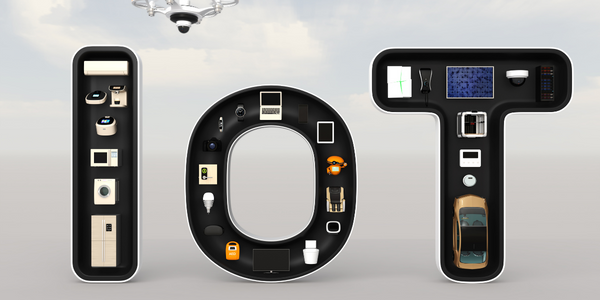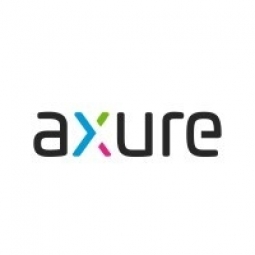Technology Category
- Application Infrastructure & Middleware - Middleware, SDKs & Libraries
- Cybersecurity & Privacy - Intrusion Detection
Applicable Industries
- Education
- Equipment & Machinery
Applicable Functions
- Product Research & Development
- Quality Assurance
Use Cases
- Virtual Prototyping & Product Testing
- Visual Quality Detection
Services
- Hardware Design & Engineering Services
- Training
About The Customer
The customer in this case study is the Harvard Business Review (HBR), a leading global publication in the field of business and management. HBR provides professionals around the world with rigorous insights and best practices to lead their organizations more effectively. The design team at HBR was primarily focused on creating static mockups for large screens. However, with the increasing importance of mobile-first design and the need for more efficient and effective communication between the design and development teams, there was a need for a transition to interactive prototyping. This transition was led by Dani Nordin, a UX expert with extensive experience in introducing user-centered design practices.
The Challenge
Dani Nordin, UX Director at Pegasystems, was tasked with transitioning the design team at Harvard Business Review (HBR) from creating static mockups for large screens to interactive mobile-first prototypes using Axure. The challenge arose from a disconnect between the design team's creation of documentation for the development team and the way the development team built things. The design team was primarily focused on the larger screen experience and presented their work in static comps due to short timelines and an impression that stakeholders couldn’t “think in mobile”. This resulted in an inconsistent experience across devices as the front-end team had to interpret how the designs would adapt to smaller screens. This led to communication breakdowns and frustration across the team. Nordin's key recommendation was to shift from static comps to interactive, adaptive Axure prototypes.
The Solution
The solution involved two major steps. The first was to get the leadership in Design and Product on board with the transition by demonstrating the advantages of prototypes in terms of clarity and responsiveness. This led to sufficient buy-in to send the designers for training on how to use the tool. The second step was to show the Design team how prototypes could be used on a project. This was done through two major projects: a redesign of the Webinar section of the website and a redesign of My Library, a set of internal features for readers. Despite initial resistance from the Design team, who felt the need for higher visual fidelity, the team eventually grew more confident in creating higher-fidelity prototypes that could serve as primary design documentation. The team also started to incorporate a mobile-first approach earlier in the design process and to use annotations to support the developers.
Operational Impact

Case Study missing?
Start adding your own!
Register with your work email and create a new case study profile for your business.
Related Case Studies.

Case Study
Smart Water Filtration Systems
Before working with Ayla Networks, Ozner was already using cloud connectivity to identify and solve water-filtration system malfunctions as well as to monitor filter cartridges for replacements.But, in June 2015, Ozner executives talked with Ayla about how the company might further improve its water systems with IoT technology. They liked what they heard from Ayla, but the executives needed to be sure that Ayla’s Agile IoT Platform provided the security and reliability Ozner required.

Case Study
IoT enabled Fleet Management with MindSphere
In view of growing competition, Gämmerler had a strong need to remain competitive via process optimization, reliability and gentle handling of printed products, even at highest press speeds. In addition, a digitalization initiative also included developing a key differentiation via data-driven services offers.

Case Study
Predictive Maintenance for Industrial Chillers
For global leaders in the industrial chiller manufacturing, reliability of the entire production process is of the utmost importance. Chillers are refrigeration systems that produce ice water to provide cooling for a process or industrial application. One of those leaders sought a way to respond to asset performance issues, even before they occur. The intelligence to guarantee maximum reliability of cooling devices is embedded (pre-alarming). A pre-alarming phase means that the cooling device still works, but symptoms may appear, telling manufacturers that a failure is likely to occur in the near future. Chillers who are not internet connected at that moment, provide little insight in this pre-alarming phase.

Case Study
Premium Appliance Producer Innovates with Internet of Everything
Sub-Zero faced the largest product launch in the company’s history:It wanted to launch 60 new products as scheduled while simultaneously opening a new “greenfield” production facility, yet still adhering to stringent quality requirements and manage issues from new supply-chain partners. A the same time, it wanted to increase staff productivity time and collaboration while reducing travel and costs.

Case Study
Integration of PLC with IoT for Bosch Rexroth
The application arises from the need to monitor and anticipate the problems of one or more machines managed by a PLC. These problems, often resulting from the accumulation over time of small discrepancies, require, when they occur, ex post technical operations maintenance.

Case Study
Data Gathering Solution for Joy Global
Joy Global's existing business processes required customers to work through an unstable legacy system to collect mass volumes of data. With inadequate processes and tools, field level analytics were not sufficient to properly inform business decisions.







